Do Right. Be Effective.
Efficiency without effectiveness is wasted effort — and this series is about changing that mindset. I’ll be publishing a new post every week with real-world examples and lessons to share. Subscribe or check back weekly for the next installment of Do Right. Be Effective.
Including Innovation in Your Portfolio – No Longer Optional
Do Right. Be Effective.
Welcome to the final post in my 4-part series on managing technology portfolios.
· In Part 2, we explored the cost of over-investing in support and maintenance.
· In Part 3, we examined the importance of having (and sharing) a roadmap, even as it changes.
· Now, in Part 4, let’s focus on the role of innovation—why it matters, how to include it, and how much time to devote to it.
Innovation Isn’t Optional Anymore
Technology evolves by the hour. We fear it, test it, adopt parts of it, and eventually adapt to it. Innovation isn’t a one-time big bang—it’s a continuous cycle.
In just 75 years, we’ve gone from the first computer to AI shaping nearly every industry. Standing still isn’t an option. Ignoring change almost guarantees being left behind.
Adding Innovation to the Roadmap
In developing and managing your roadmap, you should include not only planned initiatives but also a separate innovation category—think of it as your lab or “skunkworks.” And it is ok to share that you are.
Innovation means that you don’t have all the answers. It needs to be a place where you can test and fail and test again. Just remember—testing for testing’s sake isn’t the goal.
Successful innovation requires you to:
· Test with purpose. Identify a problem (e.g., reducing customer implementation costs) and explore how technology (like AI) could solve it.
· Fail fast, learn faster. Not every test will succeed—but the lessons inform future success.
· Engage multiple teams. Sales, support, customer success, and marketing all bring perspectives that shape whether an innovation is viable and valuable.
Innovation doesn’t happen in a vacuum. Cross-functional involvement ensures experiments can actually make it to market.
Managing Expectations
Yes, innovation items should appear on your roadmap—but as innovation initiatives, not promises. Share what you’re exploring without committing to specific outcomes until the ideas are validated.
Successful innovations may push existing items off the roadmap. Unsuccessful ones may quietly disappear. Both outcomes are healthy.
How Much Time Should Innovation Get?
In earlier posts, I argued that:
· At least 50% of time should go to executing the roadmap (planned work).
· Less than 50% should go to support and maintenance.
So where does innovation fit in?
· There must always be some space for it.
· The share depends on market speed and competitive pressure.
· When change is accelerating, innovation time needs to expand—the key is to provide balance by reducing support and maintenance work that may be considered non-essential now with new innovations.
Managing your technology portfolio means balancing all three deliberately—support, roadmap, and innovation—so your organization can do right, and be effective.
Support keeps the lights on.
Roadmaps guide the way forward.
But innovation is what ensures you’ll still be relevant five years from now.
📅 To bring it all together, join me at the Project Insight webinar “Shaping Your Company’s Future with Your Project Portfolio”—where we’ll translate these ideas into practical steps for your organization.
Enterprise Portfolio Management — The Importance of Roadmaps
Do Right. Be Effective.
Welcome to part 3 of my 4-part series on managing technology portfolios. In part 2, we looked at the cost of over-investing in support and maintenance. Now, let’s shift from firefighting to planning—and explore how roadmaps shape your organization’s ability to deliver on its goals.
Why Roadmaps Matter
An organization’s successful future depends on its ability to deliver on planned goals. In technology, that means the roadmap (aka portfolio). Key questions every team should ask:
How far ahead does your roadmap extend?
What belongs on it—and how is that decided?
How often should it change?
How much time should be devoted to executing roadmap initiatives?
Most organizations (outside of very large enterprises) plan with a 3–5 year roadmap. Early-stage companies may look shorter-term while they search for their niche.
Sharing the Roadmap (Even When It Changes)
Too often, companies hesitate to publish or even discuss their roadmap because they expect it to change. But that’s a mistake. A roadmap is more than a static plan—it’s a tool to:
Communicate strategy
Spark conversations with executives, sales, employees, and customers
Align around where the market is headed
Changes aren’t the problem. Avoiding transparency because you fear explaining change is the problem.
Building Roadmaps with Real Input
A roadmap should be based on both industry trends and customer feedback. Data sources include sales, marketing, support, customer success, and end users. Build a process for engaging regularly and collaboratively, inside and outside your organization.
If there’s no clear “why” behind roadmap decisions, executives and employees will struggle to explain them—or avoid sharing altogether—leaving prospects and customers uncertain about committing to your organization.
How Much Time Should Roadmaps Get?
In part 2, we explored how support and maintenance should consume less than 50% of your team’s time. Where should that time go instead? To the roadmap.
Organizations should aim to spend at least 50% of their time on non-urgent but important planned work—the initiatives that bring the roadmap to life. That includes:
Executing roadmap projects
Reviewing market and customer feedback
Adjusting priorities to validate or update the plan
When organizations consistently execute on near-term (1-year) roadmap goals, they prove they can use critical and scarce resources effectively. Even if years 2 or 3 shift, success in the short term builds confidence and credibility with customers and employees.
In short: support keeps the lights on, but roadmaps light the way forward.
📅 Stay tuned—next we’ll talk about innovation and how to make space for it in your portfolio. And don’t forget: we’ll bring all of this together in an upcoming webinar with Project Insight, “Shaping Your Company’s Future with Your Project Portfolio.”
Technology Portfolio Management Starts with Support
Do Right. Be Effective.
Welcome to part 2 of my 4-part series on managing technology portfolios. In this post, we’ll explore where your team spends its time—and how too much focus on support and maintenance can quietly sabotage your organization’s future.
Start by Measuring Time
At the end of each week, ask your team two simple questions:
How many hours did you work this week?
Roughly what percentage of that time went to:
Support & Maintenance
New work for a client or product
Innovation
Don’t make this complicated. Gather responses from across the organization—project managers, business analysts, engineers, support teams, QA, customer success managers—and then summarize the totals. Were you surprised by the percentages?
Research shows that support and maintenance often consume more than half of IT budgets, leaving little capacity for innovation and growth. (source) If your team is spending 50% or more of its time on these activities, it may be time to rethink resource planning.
The High Cost of Too Much Support Work
Clients leave frustrated with performance and look for alternatives.
Teams burn out as they spend every day fighting fires.
Sales struggles to offer the new capabilities your market is ready to pay for.
A Framework to Break the Cycle
The first step forward is to categorize support requests using the Urgent/Important Matrix:
Urgent & Important: Issues with measurable client impact—these must be fixed.
Important & Not Urgent: Link to your roadmap—avoid quick fixes; build long-term solutions. (We’ll explore this more in the next blog.)
Urgent & Not Important: Issues that seem urgent but may have simple work-around that clients are supportive of. Monitor these. Communication with clients is critical here, and if volume grows, they may move categories.
Not Urgent & Not Important: Track them, but deprioritize. These are “nice to haves” that may become innovation backlog items.
If your organization isn’t categorizing support this way, you’re likely diverting too many resources away from the initiatives that truly drive growth.
📅 Don’t forget—this series will wrap up in an upcoming webinar with Project Insight: “Shaping Your Company’s Future with Your Project Portfolio.” That session will bring the blogs together into a practical roadmap you can apply in your own organization.
👉 Register here: https://projectinsight.com/project-management-webinars/
#DoRightBeEffective #ProjectPortfolio #Leadership #Innovation
Future-Proofing with Technology Portfolio Management
Do Right. Be Effective.
Welcome to my third post in my Do Right. Be Effective. series.
This week, senior leaders in the Wealth Management industry gathered in Huntington Beach, CA for the Future Proof conference—a meeting point for innovation, strategy, and the future of business. It sparked a bigger question: how can companies ensure they are truly future-proof?
After decades of working with start-ups and small technology companies—and watching both successes and failures—I’ve seen one theme emerge: the way you manage your technology portfolio of projects determines your long-term viability.
Here’s the challenge:
Innovation without effective execution is bound to fail.
Moving too soon to market can backfire, opening the door for competitors.
Moving too slowly leaves space for nimble disruptors to leapfrog laggards.
Today, AI is the next big disruptor. But how prepared is your organization to thrive—not just experiment—when the stakes are this high?
Over the next three weeks, I’ll explore how technology firms can organize their portfolios across three critical areas: maintenance/support, product development, and innovation. When managed and coordinated deliberately and effectively, these pillars allow organizations to scale with purpose and avoid the pitfalls that stall growth.
The Lost Art of Measuring ROI
Do Right. Be Effective.
Welcome to the second post in my Do Right. Be Effective. series.
Too often, project teams focus on doing things right instead of doing the right things. In this post, let’s talk about results.
Traditionally, project success is measured by cost, time, and scope. Those metrics matter—but just like efficiency vs. effectiveness, they don’t tell the whole story. Unless you measure against the intended outcomes (the project’s true ROI), you’re missing the mark.
You might ask: If the project was on time, on scope, and on budget—why wouldn’t it deliver results?
Here’s why:
The planned solution doesn’t guarantee business impact.
Execution challenges may require extra steps to achieve outcomes.
Shortcuts taken under pressure can reduce effectiveness.
Less experienced resources may not implement optimally, creating inefficiencies.
And often, unforeseen factors emerge that affect performance.
Now ask yourself: Does the project team clearly understand the goals?
Most projects are approved through a cost-benefit analysis that defines an expected ROI. The true measure of success needs to align with those outcomes, such as:
Increase shop floor efficiency by 10%
Grow the business by 20% with the same staff
Reduce account-opening errors for financial advisors
When goals are clear and measurable, you can incorporate verification steps into the project plan to confirm whether the project actually delivered on its promise.
The project manager has the responsibility and authority to ensure ROI is not just defined but monitored and validated. Sometimes that means extending the plan to include post-implementation measurement—tasks that prove whether the original ROI was achieved.
Finally, ask yourself: “Why should I care? My company evaluates me only by cost, time, and scope.”
Because at the end of the day:
Companies survive when they deliver what they promise.
Companies thrive when they can demonstrate true impact.
Do Right. Be Effective. And make sure ROI isn’t just promised—it’s delivered.
Every project is a chance to make an impact. Every week, I’ll share another pitfall to avoid and a practice to adopt—so you can Do Right. Be Effective. every time.
Do Right. Be Effective.
Welcome to the first post in my Do Right. Be Effective. series.
So what do I mean by this phrase?
Over my 40+ years as a project manager, I’ve seen projects succeed brilliantly and others fail spectacularly. Each one has been a lesson — and the biggest takeaway is this:
👉 Too often, project teams focus on doing things right instead of doing the right things.
That’s the difference between efficiency and effectiveness.
You can be efficient at solving problems.
But if you’re solving the wrong problem, your project is still at risk.
A Common Example:
A project manager runs a solid meeting, identifies new issues, and assigns them out. A team member then spends 10 hours fixing the issue before the next meeting. At the update, the problem is solved — but now that person is behind on critical path tasks that actually determine project success.
The result? The project slips, even though the team was “efficient.”
The Lesson:
Success requires prioritizing the right work at the right time.
This blog series will share pitfalls I’ve seen — and how to avoid them — by adopting a Do Right. Be Effective. mindset.
Do Right. Be Effective. Because success comes from focusing on what truly matters.






